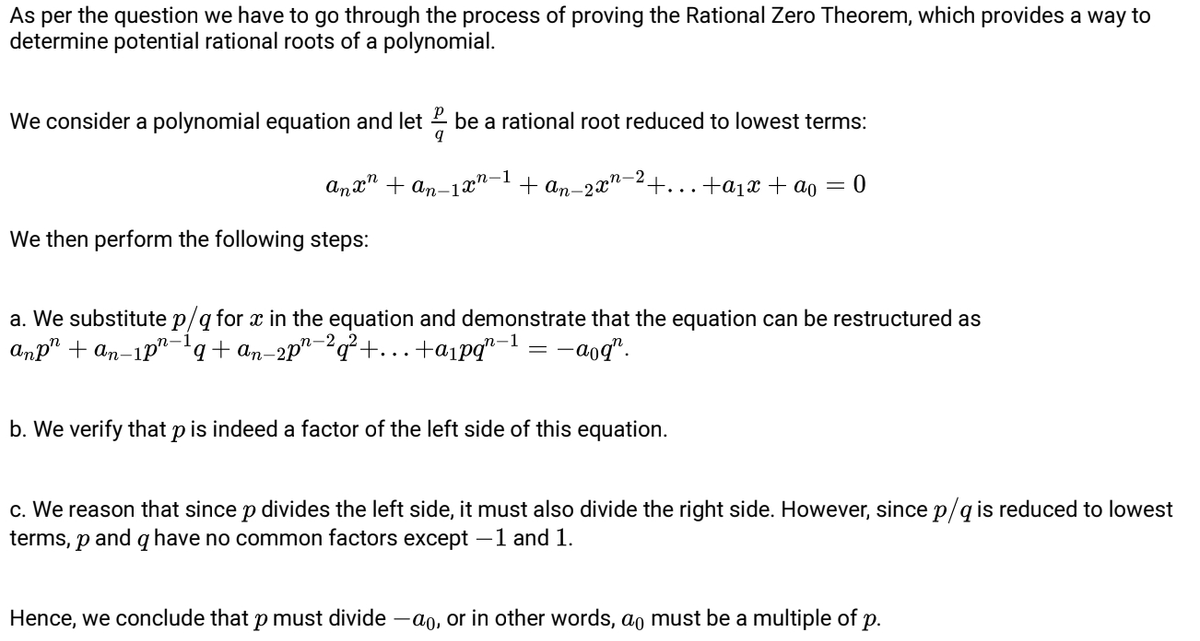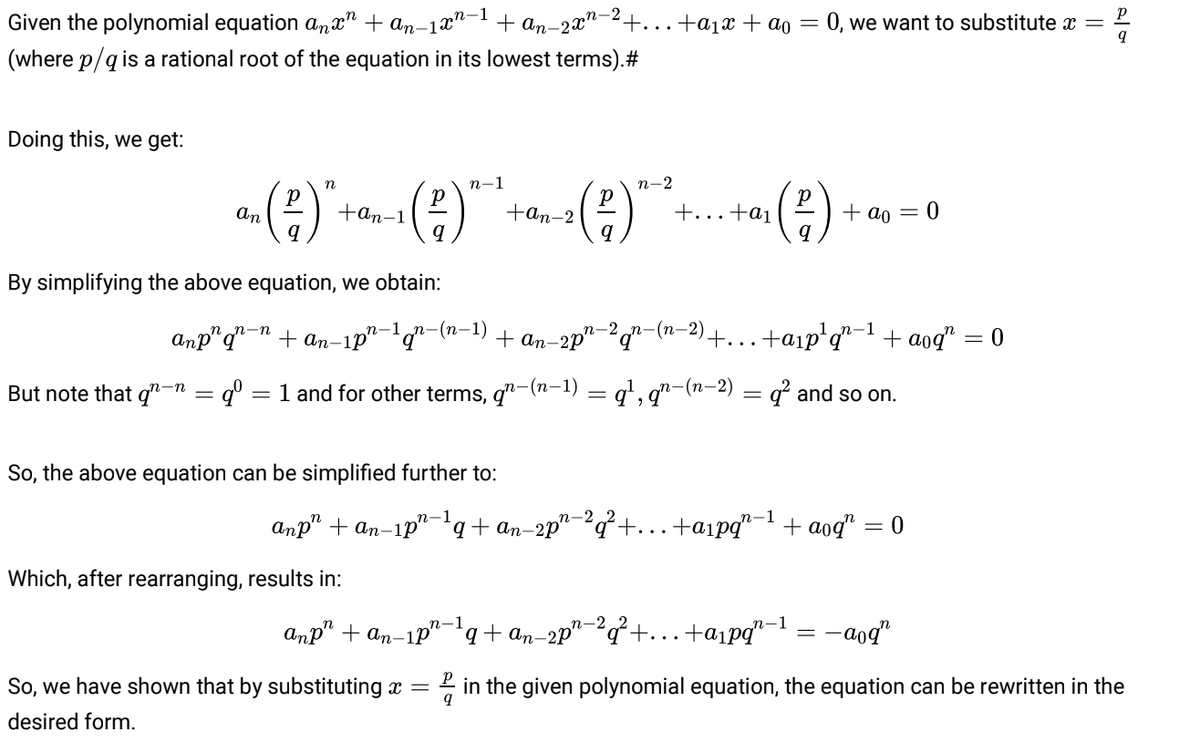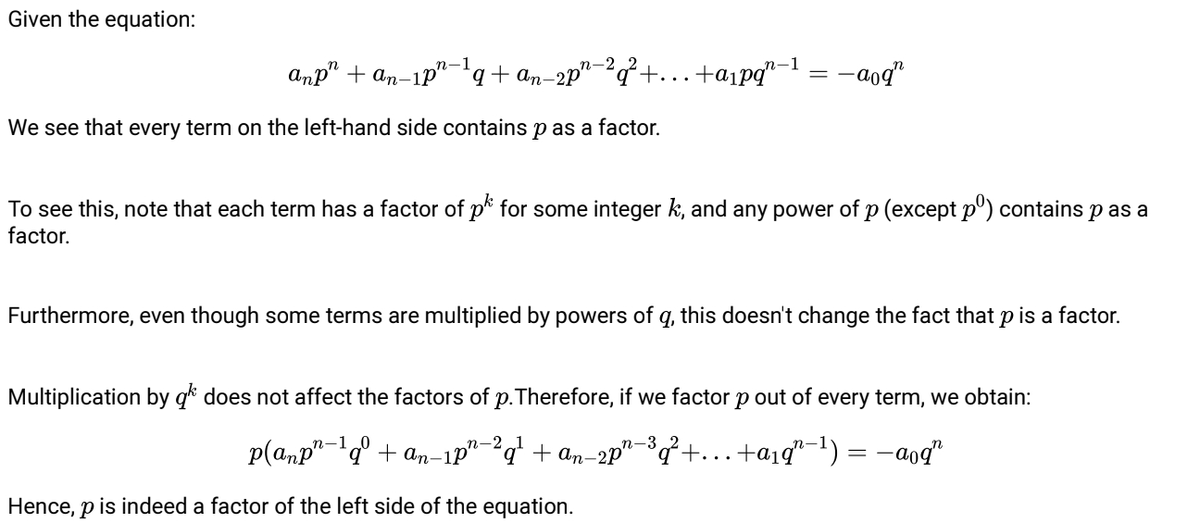We lead you through the steps involved in the proof of the Rational Zero Theorem. Consider the polynomial equation anxn + an-1xn-1 + an-2xn-2 + ....... + a1x + a0 = 0, and let p/q be a rational root reduced to lowest terms. Solve; a. Substitute p/q for x in the equation and show that the equation can be written as anpn + an-1pn-1q + an-2pn-2q2 + ...... + a1pqn-1 = -a0qn. b. Why is p a factor of the left side of the equation? c. Because p divides the left side, it must also divide the right side. However, because p/q is reduced to lowest terms, p and q have no common factors other than -1 and 1. Because p does divide the right side and has no factors in common with qn, what can you conclude? d. Rewrite the equation from part (a) with all terms containing q on the left and the term that does not have a factor of q on the right. Use an argument that parallels parts (b) and (c) to conclude that q is a factor of an.
We lead you through the steps involved in the proof of the Rational Zero Theorem. Consider the polynomial equation anxn + an-1xn-1 + an-2xn-2 + ....... + a1x + a0 = 0, and let p/q be a rational root reduced to lowest terms. Solve;
a. Substitute p/q for x in the equation and show that the equation can be written as anpn + an-1pn-1q + an-2pn-2q2 + ...... + a1pqn-1 = -a0qn.
b. Why is p a factor of the left side of the equation?
c. Because p divides the left side, it must also divide the right side. However, because p/q is reduced to lowest terms, p and q have no common factors other than -1 and 1. Because p does divide the right side and has no factors in common with qn, what can you conclude?
d. Rewrite the equation from part (a) with all terms containing q on the left and the term that does not have a factor of q on the right. Use an argument that parallels parts (b) and (c) to conclude that q is a factor of an.



Step by step
Solved in 5 steps with 4 images









